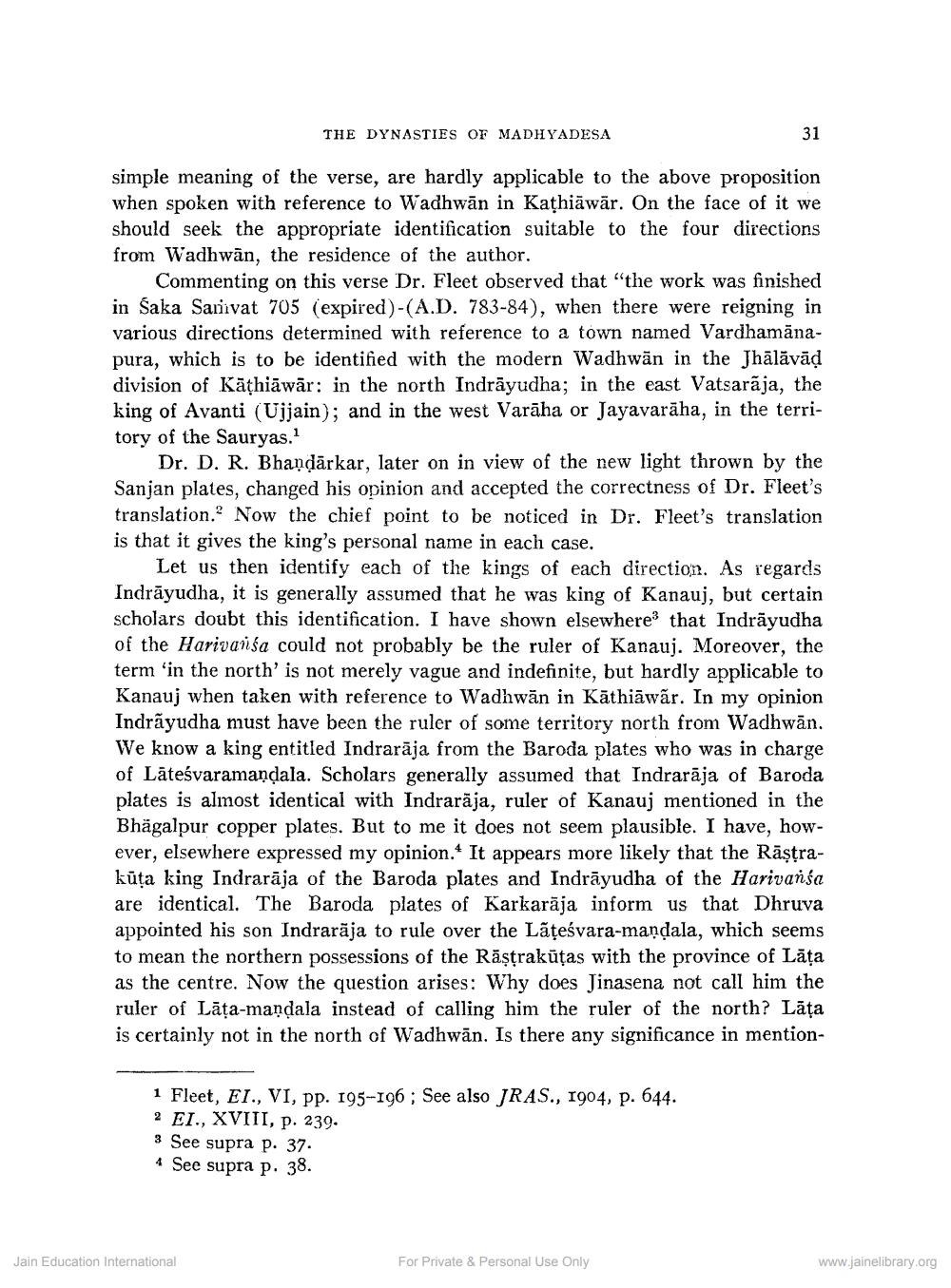________________
THE DYNASTIES OF MADHYADESA
31
simple meaning of the verse, are hardly applicable to the above proposition when spoken with reference to Wadhwān in Kathiāwār. On the face of it we should seek the appropriate identification suitable to the four directions from Wadhwān, the residence of the author.
Commenting on this verse Dr. Fleet observed that "the work was finished in Saka Sanivat 705 (expired)-(A.D. 783-84), when there were reigning in various directions determined with reference to a town named Vardhamānapura, which is to be identified with the modern Wadhwān in the Jhālāvād division of Kāțhiāwār: in the north Indrāyudha; in the east Vatsarāja, the king of Avanti (Ujjain); and in the west Varāha or Jayavarāha, in the territory of the Sauryas.
Dr. D. R. Bhandārkar, later on in view of the new light thrown by the Sanjan plates, changed his opinion and accepted the correctness of Dr. Fleet's translation. Now the chief point to be noticed in Dr. Fleet's translation is that it gives the king's personal name in each case.
Let us then identify each of the kings of each direction. As regards Indrāyudha, it is generally assumed that he was king of Kanauj, but certain scholars doubt this identification. I have shown elsewhere that Indrāyudha of the Harivarśa could not probably be the ruler of Kanauj. Moreover, the term 'in the north' is not merely vague and indefinite, but hardly applicable to Kanauj when taken with reference to Wadhwān in Kāthiāwăr. In my opinion Indrāyudha must have been the ruler of some territory north from Wadhwān. We know a king entitled Indrarāja from the Baroda plates who was in charge of Lāteśvaramandala. Scholars generally assumed that Indrarāja of Baroda plates is almost identical with Indrarāja, ruler of Kanauj mentioned in the Bhagalpur copper plates. But to me it does not seem plausible. I have, however, elsewhere expressed my opinion. It appears more likely that the Rāstrakūta king Indrarāja of the Baroda plates and Indrāyudha of the Harivansa are identical. The Baroda plates of Karkarāja inform us that Dhruva appointed his son Indrarāja to rule over the Lãţeśvara-mandala, which seems to mean the northern possessions of the Rāştrakūtas with the province of Lāta as the centre. Now the question arises: Why does Jinasena not call him the ruler of Lāța-mandala instead of calling him the ruler of the north? Lāța is certainly not in the north of Wadhwān. Is there any significance in mention
i Fleet, EI., VI, pp. 195-196; See also JRAS., 1904, p. 644. 2 EI., XVIII, p. 239. 3 See supra p. 37. 4 See supra p. 38.
Jain Education International
For Private & Personal Use Only
www.jainelibrary.org




